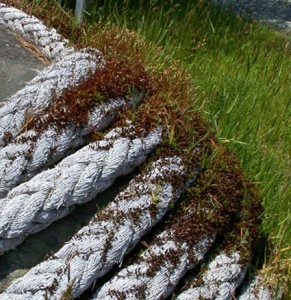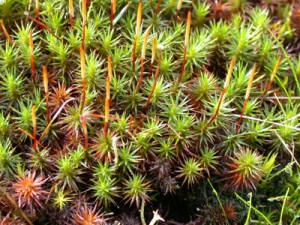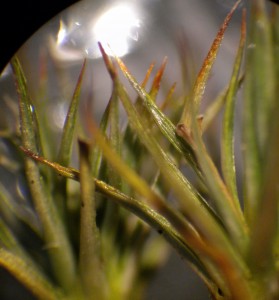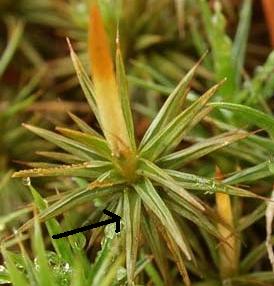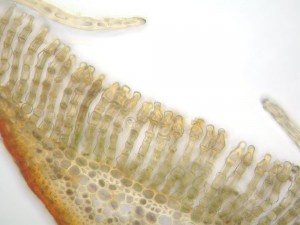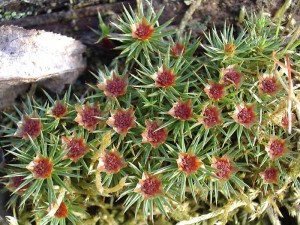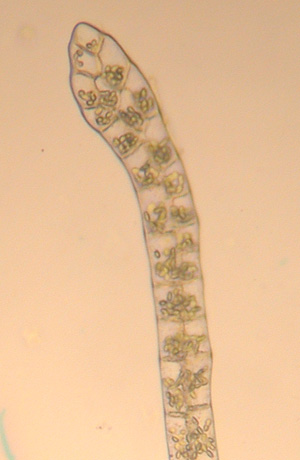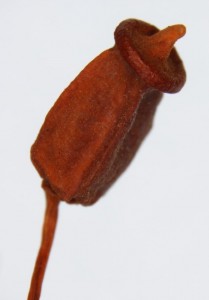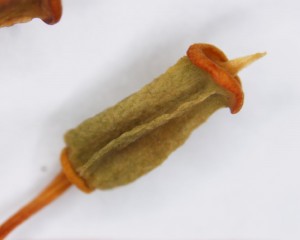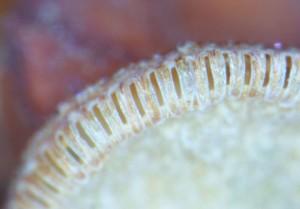Habitat
This weedy Polytrichid can be found within forests, along road banks and cliff ledges on dry, sterile and disturbed soil.
Gametophyte
Overall structure:
This moss is acrocarpous. It forms short or tall turfs. The plants are blue-green and unbranched.
Leaf structure:
The leaves of P. juniperinum have reddish tips and are strongly divergent when they are dry and .
A closer look at the leaves shows the clear laminar edges overarching the rest of the leaf.
A cross section of the lead will show the overarching lamina, enclosing much of the lamellae. It is also worth noting that the uppermost cells of the lamellae are smooth.
Stem:
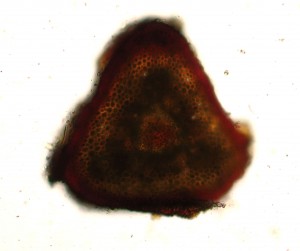
A cross section of P. juniperinum will reveal the stereids (found in the cortical area), the hydroids (in the centre), and the leptoids (external to the hydrome and internal to the cortical region).
Male gametophyte:
As seen in this picture, the perigonial rosettes (which houses antheridia and paraphyses) are red-tinged.
The antheridia, which contain sperm, have a sac-like appearance.
Here is an isolated paraphysis and the picture clearly shows that they are biseriate!
Sporophyte
Sporangium:
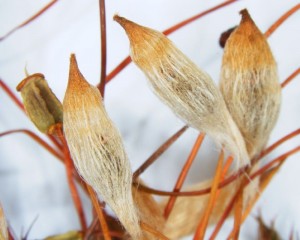 Strikingly hairy calyptra cover the developing sporangia.
Strikingly hairy calyptra cover the developing sporangia.
The mature sporangium is dull red-brown in color and is inclined (as opposed to erect when young). Note that it is four-angled. 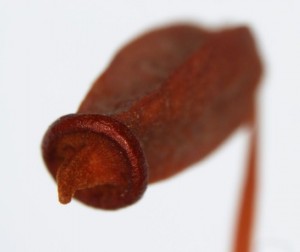
left: mature sporangium with operculum
right: slightly immature sporangium from a herbarium specimen
left: close-up of peristome teeth fused to epiphragm

